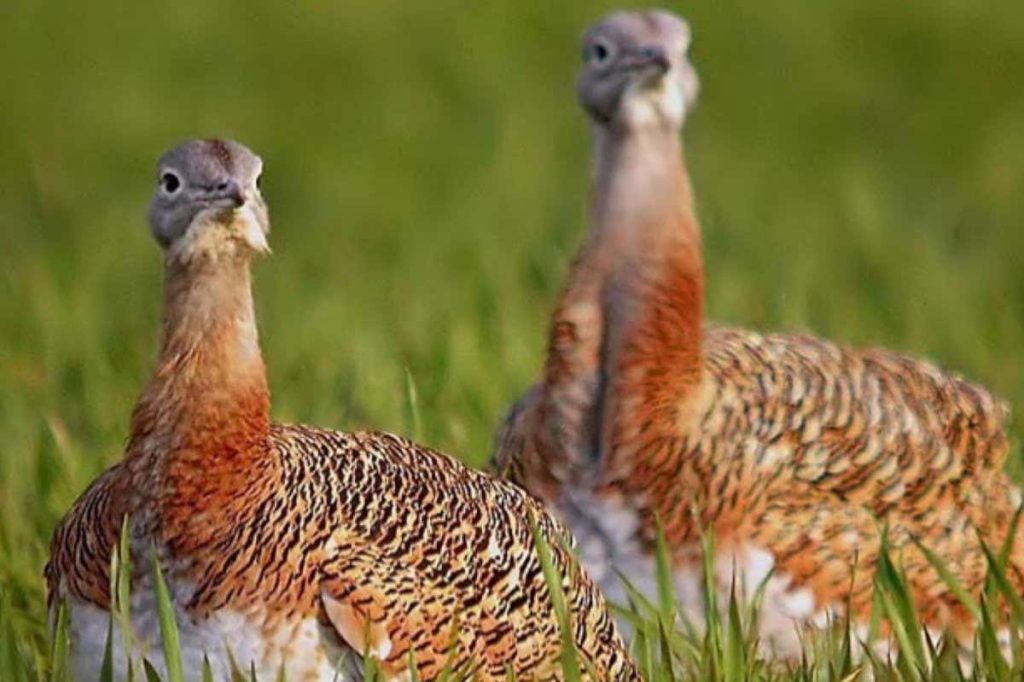Male great bustards seek out two toxic plants during the birds’ breeding season, and extracts from these plants have been found to kill common pathogens in the lab
Life 23 November 2022
Great bustards (Otis tarda)
Carlos Palacin
A wild, turkey-like bird tends to eat more toxic plants during the breeding season, possibly as medicine to fend off sexually transmitted diseases and so appear more attractive to potential mates.
Male great bustards (Otis tarda), the heaviest flying animals alive today, expend great energy in elaborate feather displays to attract females. They also present their cloaca – the common opening for their digestive, urinary and reproductive tracts – to females, who appear to “examine” the orifice and even peck at it, possibly looking for signs of infection.
Only around 10 per cent of males successfully mate, so they might benefit from self-medicating prior to these examinations, says Luis Bautista-Sopelana at the Spanish National Research Council in Madrid.
Advertisement
In previous research, Bautista-Sopelana and his colleagues found that male great bustards ate more blister beetles, which can be toxic at high doses, during the breeding season. The beetles’ chemical composition appeared to have a pharmaceutical effect against parasites, he says.
Bautista-Sopelana wondered if that might also explain why the birds prefer to eat common poppies (Papaver rhoeas) and purple viper’s-bugloss (Echium plantagineum) – plants that are toxic to some extent and have little nutritional value – during the breeding season.
He and his colleagues collected these plants at one of the largest bustard breeding grounds, near Valdetorres del Jarama, Spain. They then used standard laboratory techniques to acquire 17 extracts and essential oils from the leaves and flowers of each plant.
Afterwards, the researchers placed individual extracts and oils in separate laboratory dishes containing organisms that commonly infect birds: a protozoan parasite (Trichomonas gallinae), a nematode worm (Meloidogyne javanica) or a fungus (Aspergillus niger).
They found that extracts and oils from the plants had notable effects on the pathogens. For example, certain flower extracts killed up to 98.6 per cent of the protozoa and up to 81.3 per cent of the worms. Purple viper’s-bugloss also showed a moderate impact on the fungus, with its flower extracts inhibiting growth by up to 52 per cent.
In addition, the team re-analysed 623 faecal samples collected for a previous study and found that great bustards of both sexes increased the amount of common poppies in their diets during the breeding season, but this was more pronounced in males.
The researchers think males may be more interested in medicinal plants because their mating displays use a lot of energy, making them more vulnerable to infections.
There have been numerous studies suggesting that wild animals probably self-medicate, says Bautista-Sopelana. “It is not a phenomenon unknown to specialists,” he says. “After reading the scientific literature on self-medication in wild animals, we are less surprised than when we started the research.”
Even so, further studies are needed, he says. “Although the efficacy of self-medication in bustards is far from proven, the behaviour of bustards in selecting these plants requires an explanation. And it seems unlikely to be purely nutritional.”
Sign up to Wild Wild Life, a free monthly newsletter celebrating the diversity and science of animals, plants and Earth’s other weird and wonderful inhabitants
More on these topics:

